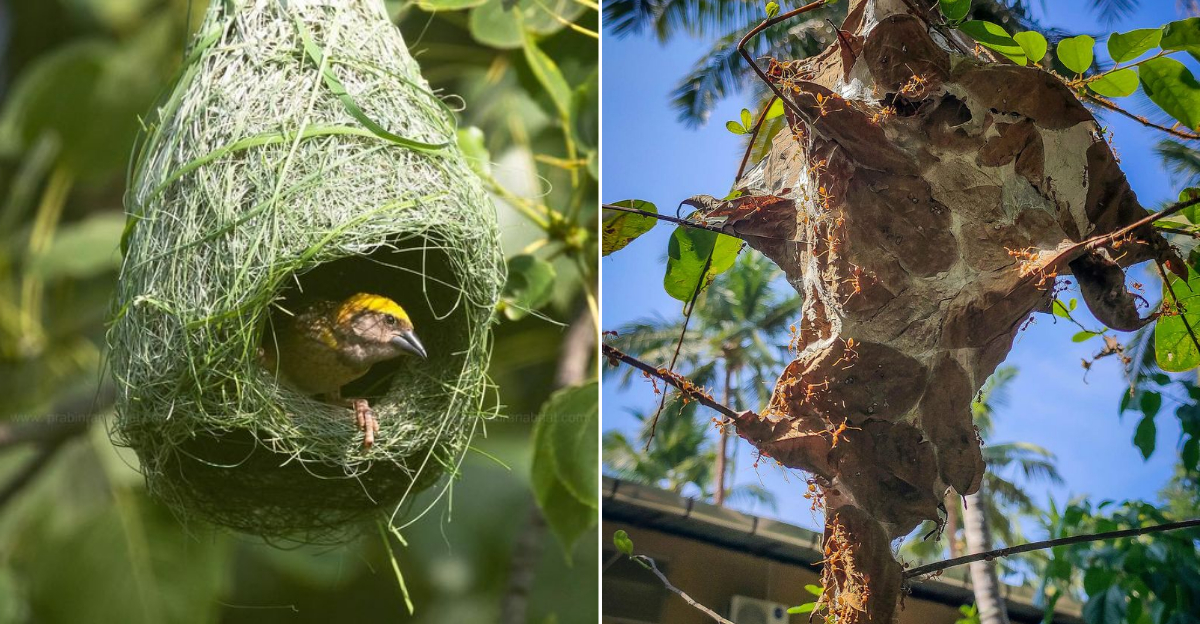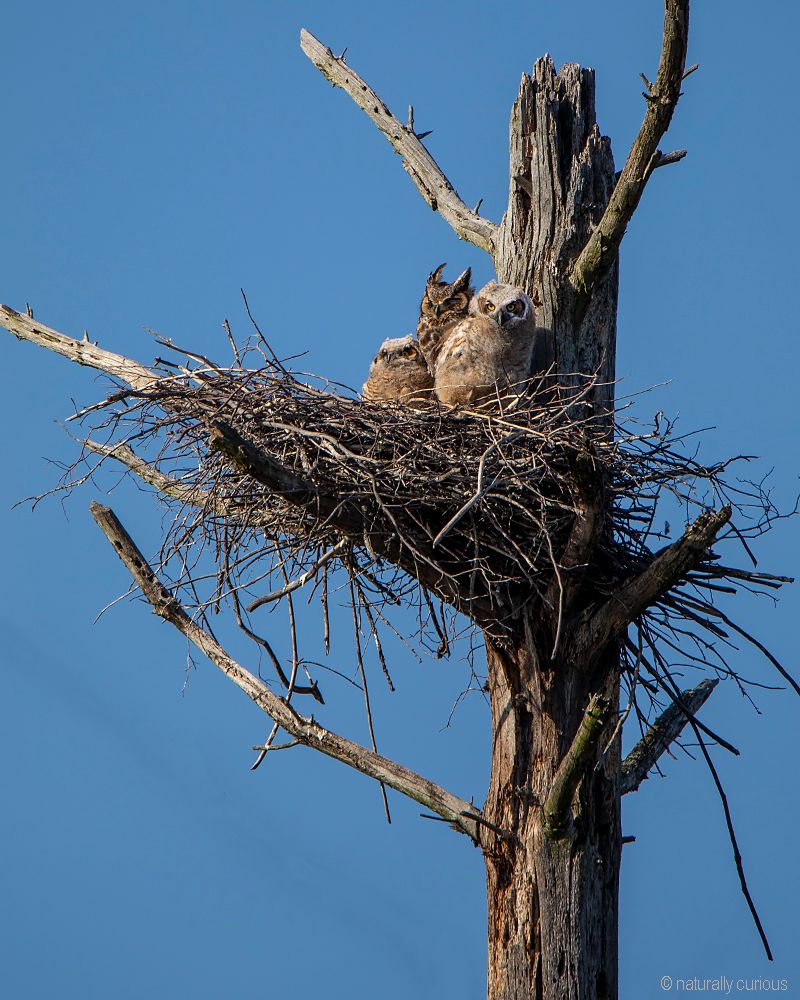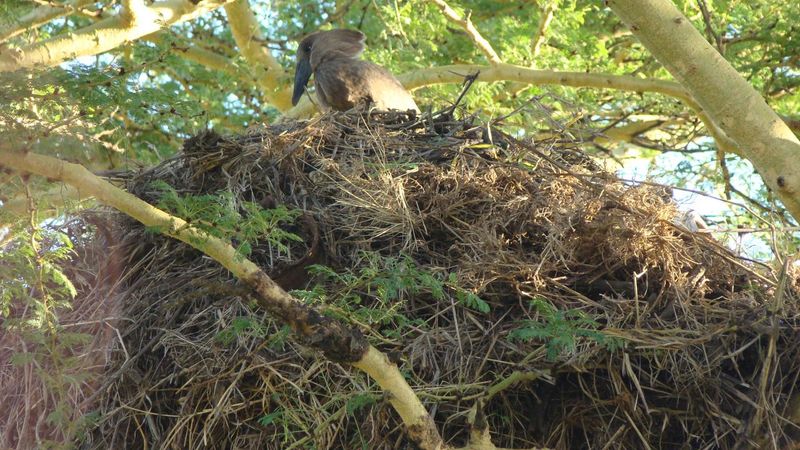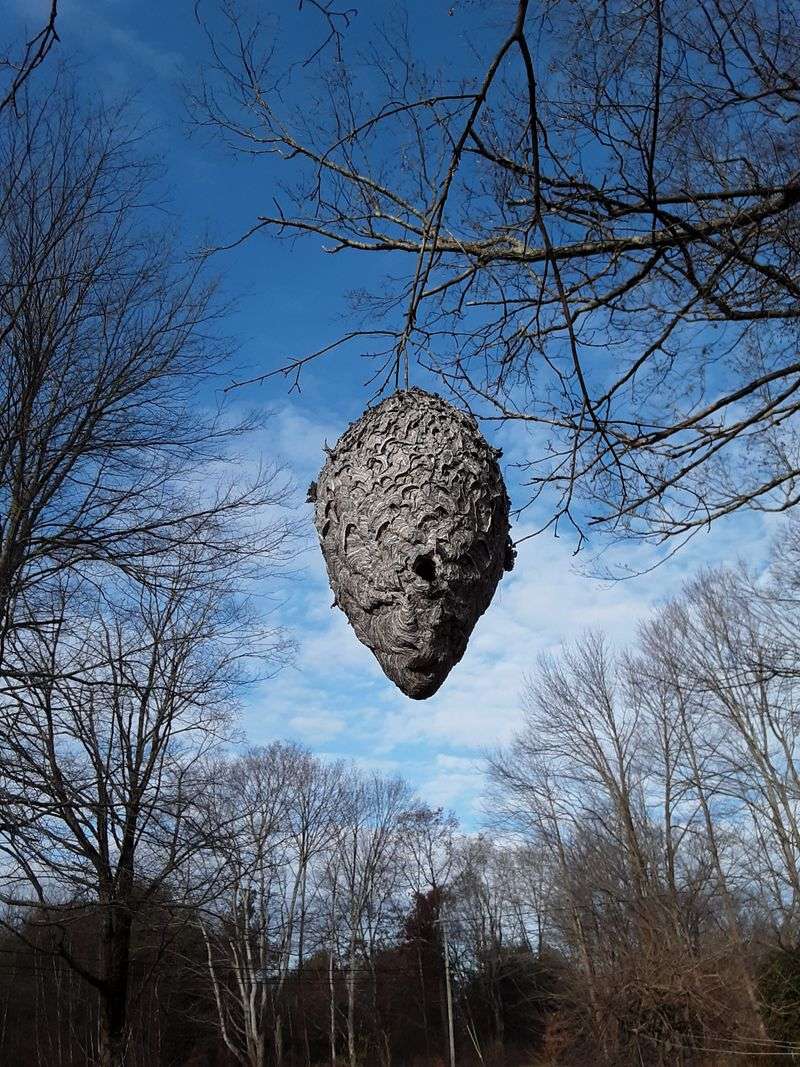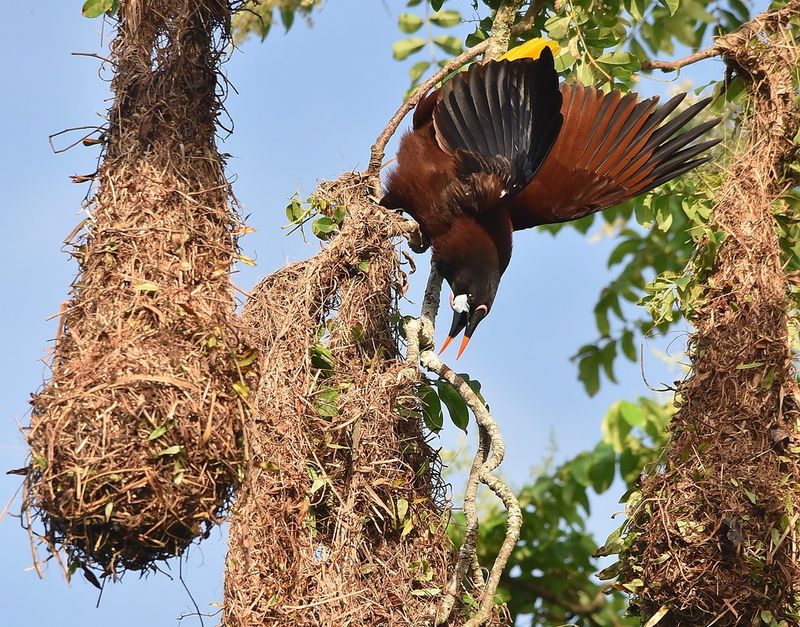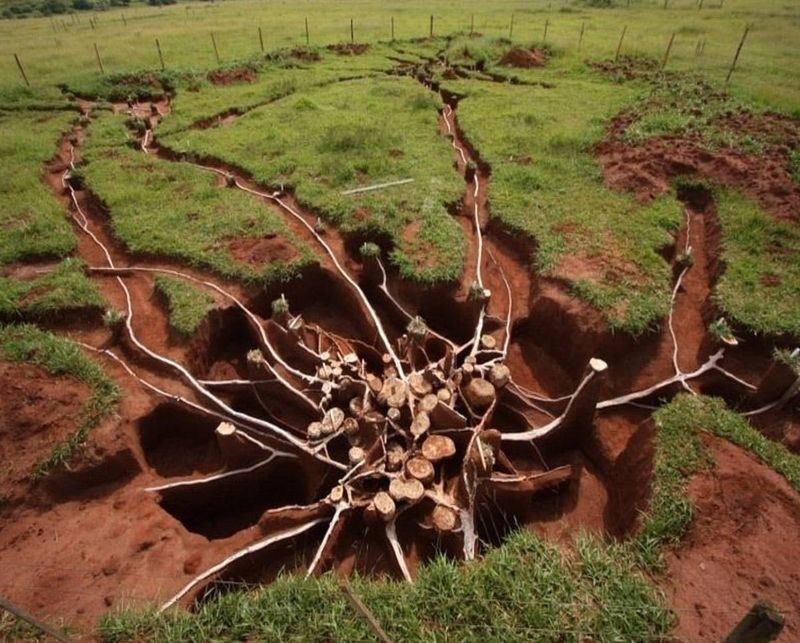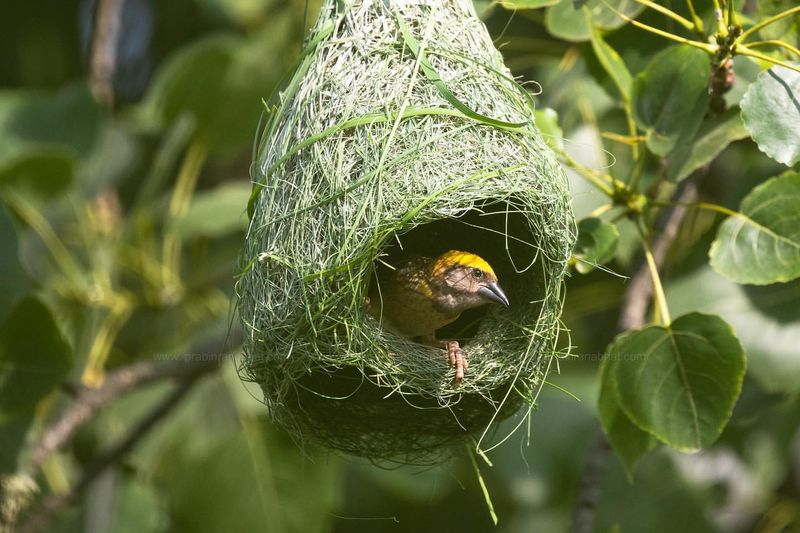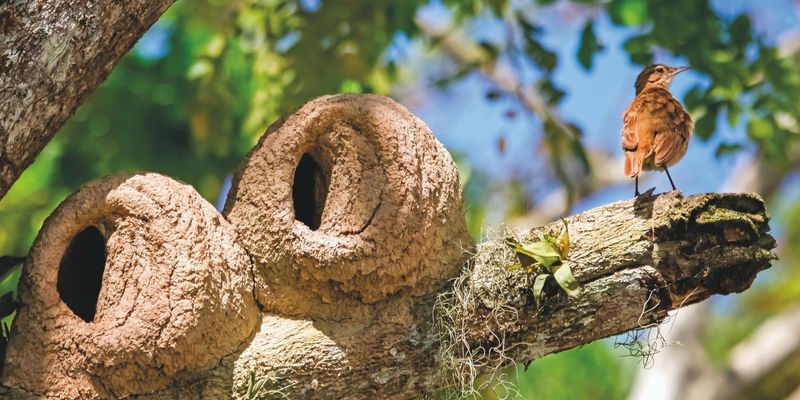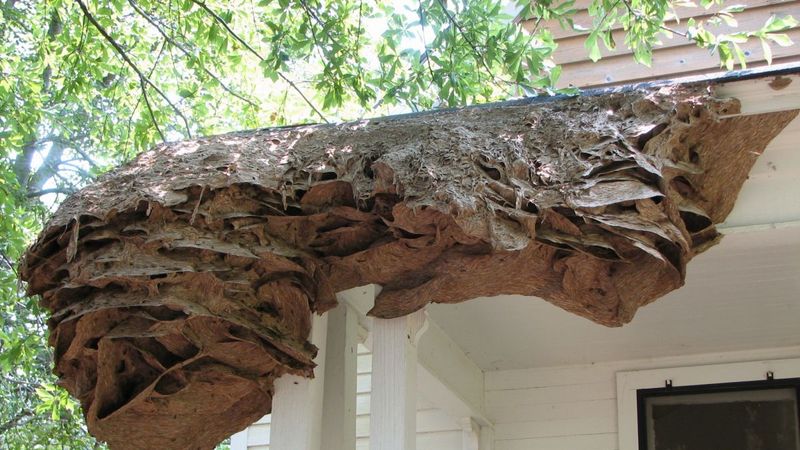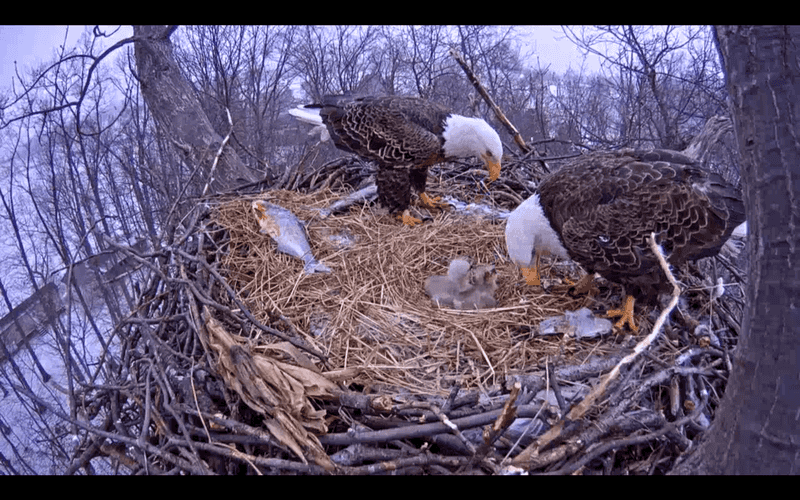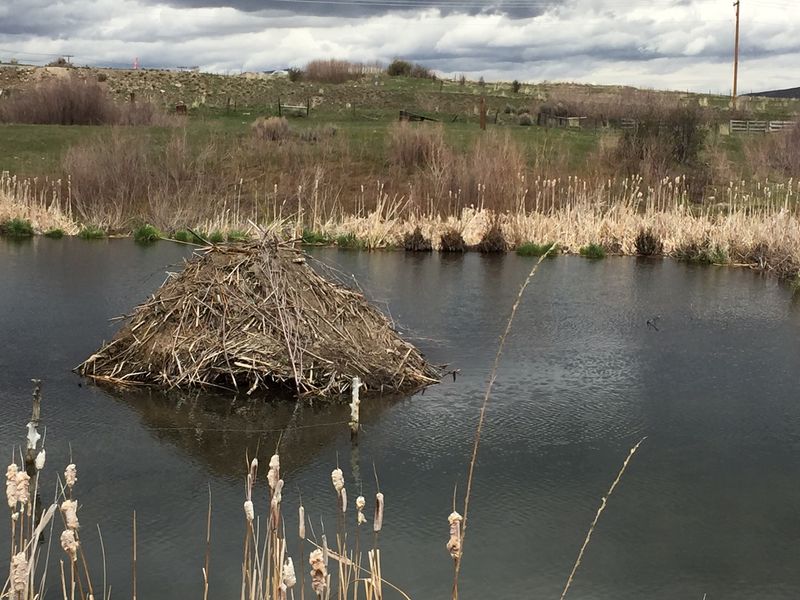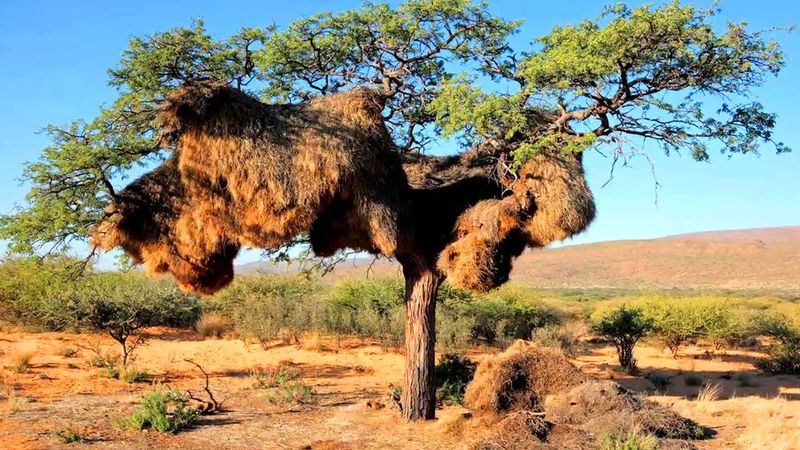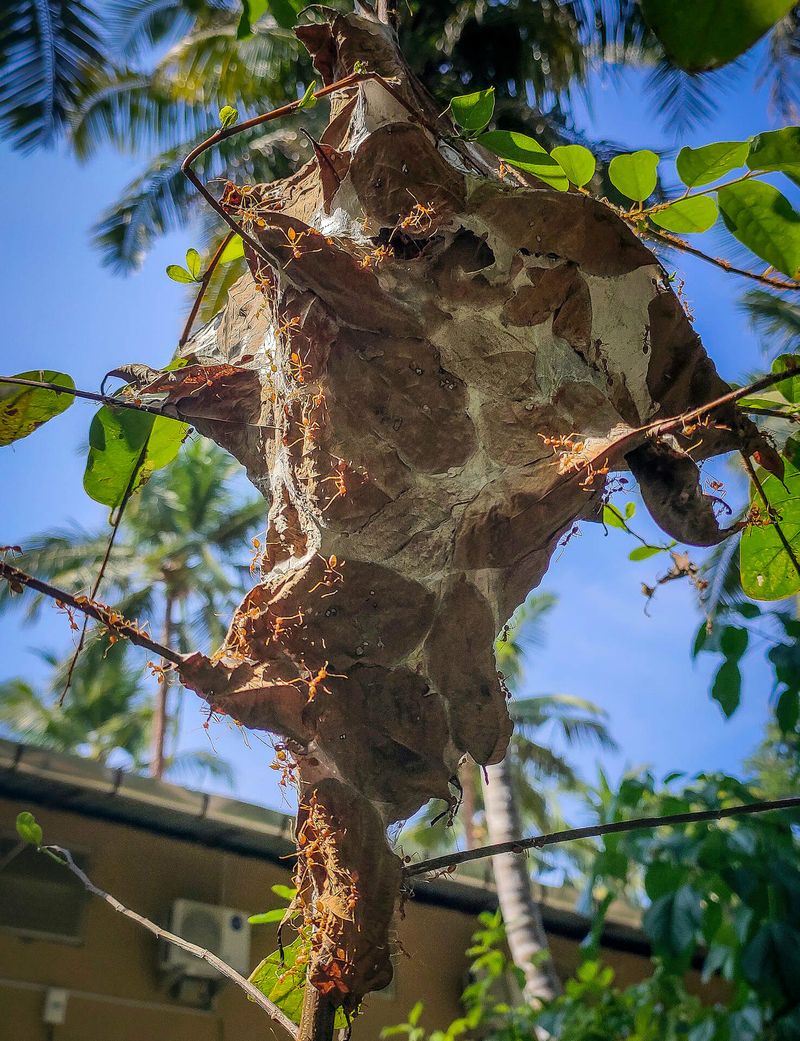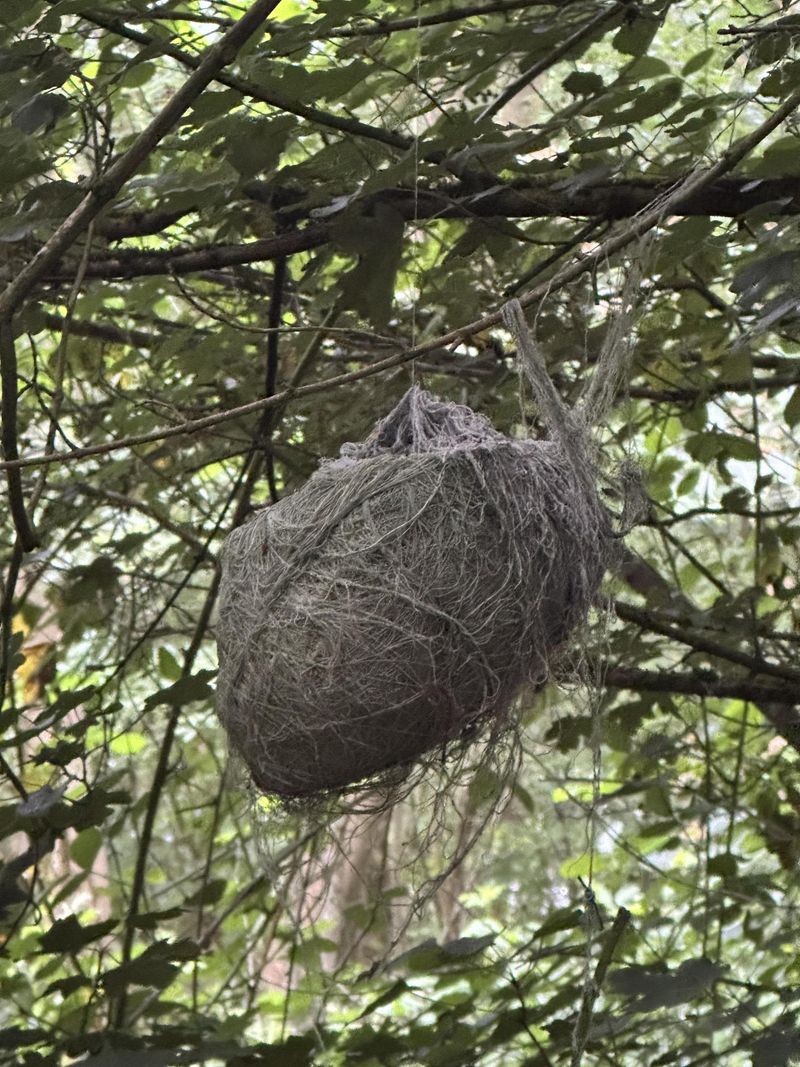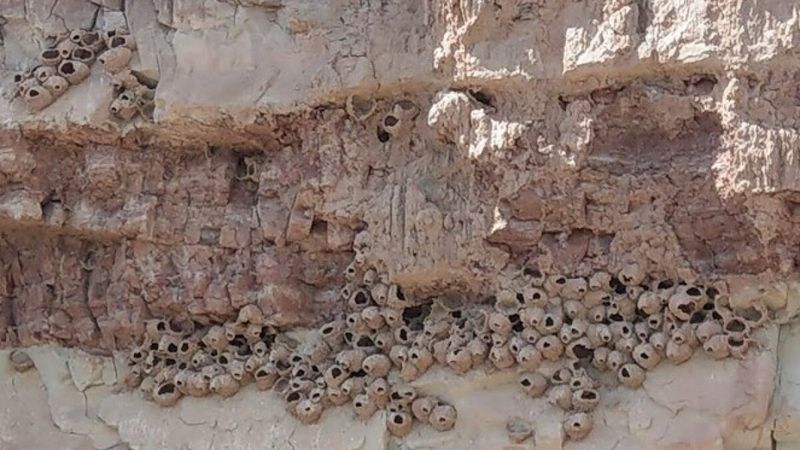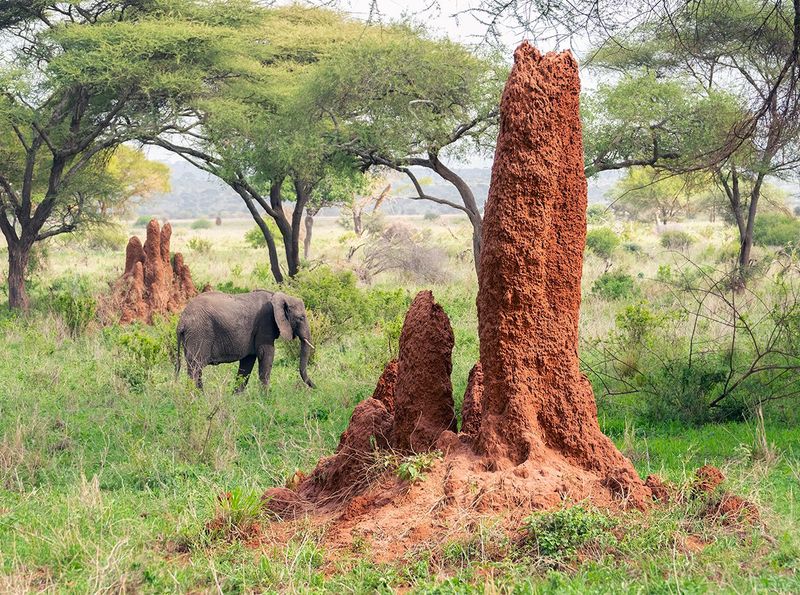Nature never fails to amaze—and when it comes to animal architecture, some creatures take nest-building to jaw-dropping levels.
From sky-high termite towers to the intricate weavings of birds and ants, these natural structures reveal just how clever and creative wildlife can be.
Each nest tells a story of survival, strategy, and stunning craftsmanship. Get ready to explore 15 of the most incredible nests from around the world, where nature’s engineers show off their awe-inspiring skills.
1. Great Horned Owl Nests
Great Horned Owl Nests High in the canopies, Great Horned Owls construct their massive nests with precision.
These nests are often found in wide, sturdy trees. Consisting mainly of sticks, the owls ingeniously weave in leaves and other natural materials to create a stable home.
Despite their size, these nests blend seamlessly with the environment, offering camouflage. The owls often use abandoned nests of other large birds, adding their own touches. Watching these majestic birds meticulously tend to their nests is truly a sight to behold.
2. Hamerkop Mud Nests
Hamerkop Mud Nests In the heart of the African savanna, the Hamerkop constructs enormous nests using mud and sticks.
These dome-shaped structures can be up to six feet wide, showcasing exceptional architectural skills. Built high in trees, they provide a panoramic lookout.
Inside, the nest is a complex labyrinth, with multiple chambers providing safety and comfort. The meticulous construction process involves the entire Hamerkop pair, demonstrating teamwork and dedication. It’s a masterpiece of avian engineering.
3. Baldfaced Hornet Nests
Baldfaced Hornet Nests Suspended from tree branches, Baldfaced Hornet nests are marvels of engineering.
Constructed from chewed wood fibers, these nests have a paper-like appearance and can reach impressive sizes. Despite their aggressive nature, the hornets are skilled architects.
The nests are typically built in concealed locations, ensuring safety from predators. Inside, tiered layers provide space and organization for the colony. Observing these nests up close reveals the intricate craftsmanship involved in their creation.
4. Montezuma Oropendola Nests
Montezuma Oropendolas are known for their distinctive hanging nests, which can reach impressive lengths. These nests, woven from vines and fibers, dangle from high branches, swaying gracefully in the wind.
Found in Central America, these colonies create a striking visual in the forest canopy. The nests offer protection from ground predators, benefiting from the height and location.
Their construction is a communal effort, with Oropendolas often nesting in groups. These nests are a testament to their cooperative nature and adaptability, enhancing their survival in diverse environments.
5. Leafcutter Ant Nests
Leafcutter ants are known for their enormous underground nests, featuring an extensive network of tunnels and chambers. These nests can cover large areas, housing millions of ants.
Leafcutter ants cultivate fungus inside their nests, which they use as food. The ants meticulously maintain the environment of their nests, controlling temperature and humidity.
These nests exemplify complex insect societies, demonstrating how division of labor and cooperation enable the ants to thrive. The sheer size and sophistication of these nests highlight the remarkable achievements of these small but industrious creatures.
6. Baya Weaver Nests
The Baya Weaver is famous for its intricately woven nests that dangle elegantly from trees and tall grasses. These nests, shaped like hanging bulbs, are true masterpieces of natural engineering.
Found predominantly in South and Southeast Asia, the nests are woven using strips of paddy leaves, grass, and twigs. Males build these nests to attract females by displaying their craftsmanship.
Their construction skills are incredible, with the entrance positioned at the bottom to deter predators. Each nest is a testament to the artistry and architectural prowess inherent in these small birds.
7. Ovenbird Nests
Ovenbirds are named for their distinctive nests, which closely resemble small clay ovens. These dome-shaped nests are crafted from mud and plant materials, meticulously constructed by the bird pair.
Primarily found in South America, these nests are solid and durable, providing excellent protection against predators and weather. The entrance is strategically positioned to deter intruders.
Ovenbirds demonstrate an impressive level of craftsmanship, with each nest showcasing the bird’s dedication to creating a safe environment for their offspring. Their architectural skills are a marvel to observe.
8. Hornet’s Paper Nest
Hornets create intricate nests from paper-like material, a product of chewed wood fibers mixed with saliva. These nests are typically built in sheltered locations, such as tree branches or eaves.
The structure consists of multiple tiers of cells, forming a spherical abode. Hornets are known for their defensive behavior, protecting their nests aggressively.
These nests are fascinating examples of insect architecture, showcasing how simple materials can be transformed into complex, functional structures. Their design speaks to the resourceful nature of hornets and their adaptability to environmental conditions.
9. Eagle’s Eyrie
Eagles are known for their commanding eyries, often built on cliff edges or tall trees. These nests are large, sturdy platforms constructed from sticks, lined with softer materials.
Eagles return to the same nest annually, repairing and expanding it, resulting in nests that grow to considerable sizes. This behavior showcases their resilience and adaptability.
Found globally, these nests provide a secure vantage point, crucial for hunting and rearing young. The eyrie’s grandeur is a testament to the eagle’s status as a symbol of freedom and strength.
10. Giant Beaver Lodges
Giant Beaver Lodges are remarkable structures, resembling small islands made of sticks, mud, and vegetation. Built in lakes and ponds, these lodges serve as both homes and fortresses.
Beavers are known for their engineering skills, creating lodges with underwater entrances to deter predators. The interior is insulated, providing warmth and safety during harsh winters.
These lodges exemplify the beaver’s role as a keystone species, with their structures impacting the surrounding ecosystem. Their ability to modify environments highlights their importance in maintaining ecological balance.
11. Sociable Weaver Nests
The Sociable Weaver is renowned for constructing one of the largest communal nests in the world. Spanning multiple generations, these nests can grow to accommodate hundreds of birds. Each colony functions as a bustling aviary metropolis, with individual nests forming chambers within the larger structure.
Found primarily in the arid savannas of southern Africa, these nests are built on acacia trees or utility poles. The nests provide shelter from the harsh sun and predators.
They’re an excellent example of cooperative living in nature, showcasing how teamwork leads to survival and thriving communities.
12. Weaver Ant Nests
Weaver ants are famous for their leafy nests, created by sewing together leaves using silk produced by their larvae. These nests, found in tropical regions, are built high in trees.
The ants work collectively, pulling leaves together and using silk threads to bind them. This cooperation allows for the construction of complex, multi-chambered nests.
Weaver ant nests are dynamic, often expanded as the colony grows. These nests demonstrate the power of teamwork and the sophisticated social structure of ant colonies, a true marvel of insect engineering.
13. Balinese Weaver Nests
Balinese Weaver birds create stunningly intricate hanging nests, resembling delicate woven baskets. These nests are often found dangling from palm trees in lush environments.
The nests are crafted from fine grasses and fibers, displaying exceptional weaving skills. Males construct these nests to attract mates, with the quality of the nest influencing female choice.
The intricate design and craftsmanship of these nests reflect the birds’ ingenuity and dedication. Balinese Weaver nests serve as functional art, merging aesthetics with practicality in nature’s architecture.
14. Cliff Swallow Nests
Cliff Swallows construct gourd-shaped nests from mud pellets, often found clustered on cliff faces or under bridges. These colonial birds nest in large groups, with hundreds of nests in a single site.
Each nest is carefully crafted, with the swallows collecting mud from puddles and streams. The nests are attached to vertical surfaces, providing protection from predators.
Their communal nesting habits and architectural skills exemplify the benefits of social living. The nests serve as both homes and social hubs, illustrating the complex behaviors of these fascinating birds.
15. Termite Mounds
Termite mounds are marvels of natural engineering, often towering several meters high. These structures are built primarily from soil, saliva, and dung, creating a robust fortress.
Found in various environments worldwide, these mounds serve as homes, nurseries, and farms for the termite colony. They feature complex ventilation systems that regulate temperature and humidity.
In some species, mounds also support agriculture, with termites cultivating fungus inside. These nests highlight the complexity and efficiency of social insect behavior, demonstrating a remarkable adaptation to environmental challenges.
